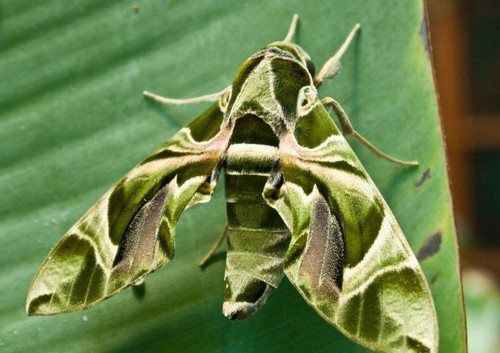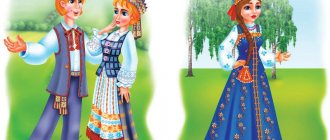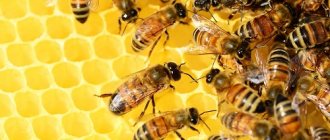Stages of development
The complex life cycle of a butterfly is surprising. It consists of 4 phases. The sequence is:
- Egg. Everything starts with him. Depending on the variety, the butterfly lays eggs on leaves, branches, and needles of various plants. The clutch can include up to 1 thousand eggs. The larva stays in the egg for 8 to 15 days.
- Caterpillar. The duration of this stage depends on the type and conditions of the environment and species. During this period of life, future butterflies have a worm-like shape with a gnawing type of mouth.
- Doll. The shape of the cocoon depends on the species and can be a circle, cylinder or oval. At this stage of development, the butterfly already has rudimentary wings, legs and a proboscis. She usually spends about 14 days in the cocoon.
- Butterfly. The lifespan of a butterfly can vary from several days to several months, depending on the species. At this stage, the insect is able to mate and lay eggs, which is the main task.
A lot of stories have been written about these amazing insects; they are fascinating due to the description of their beauty. There are also a number of interesting facts about butterflies:
- The size of the smallest known butterfly, called acetosia, is no more than 2 mm, and the largest, called agrippina, is 30 cm.
- Butterflies consume food like elephants - through the trunk, of course, the size of the trunk is very small, but there is definitely a similarity.
- About 165 thousand species of these beautiful creatures are known on the planet.
- The fastest and hardiest butterfly is called a swallowtail, at the moment it is very rare, but once this insect was seen in Tibet at an altitude of 4500 meters above the ground.
- But the most cunning are hawk moths; they have the ability to pretend to be a queen bee, creating a buzz. Using this trick, they enter the bee hive and gorge themselves on honey, which is their delicacy.
- Butterflies have taste buds on their legs, so they feed by sitting on top of the food.
- The habitat of butterflies includes such diverse places that only in the conditions of Antarctica these insects are not able to survive. Despite their fragile structure, they can withstand even the harsh climate conditions of Queen Elizabeth Island, which is located just a thousand kilometers from the North Pole.
- During their very short life, butterflies lay up to a thousand eggs, from which caterpillars will soon hatch.
- The Apollo butterfly is the only one that can live where there is snow all year round and not experience discomfort.
- Almost all butterflies are afraid of water, as it has a detrimental effect on the condition of insect wings, and only one butterfly, called the lilac moth, is able to emerge from the water and continue flying.
- Some species of butterflies can reach speeds of up to 60 kilometers per hour.
- The monarch butterfly is a true healer among its species. She is able to recognize the beneficial properties of plants and successfully use them if her fellow creature needs help.
- Calyptra eustrigata is a very rare species of butterfly, but no less interesting. The males of this species are capable of drinking blood, like mosquitoes.
- Moths have an exoskeleton that is located on the outside of their body.
- The complex structure of the eyes makes it possible to recognize certain colors.
Lepidopterologists study butterflies; there is an entire section in entomology dedicated to these beautiful creatures.
Analysis of conducted research
With proper preparation of conditions, the correct temperature and air humidity, a cabbage caterpillar can turn into a butterfly at home. In our case, all the rules for growing a caterpillar into a pupa and a pupa into a butterfly were followed.
To our surprise, only one butterfly was able to hatch, although after the pupation of three caterpillars, two were moving. Most likely, due to late hatching and lack of food, the butterfly did not survive. Also, at some point during the feeding of the adult, the butterfly stuck to the syrup and slightly damaged its wing, this could also be the cause of death. A butterfly cannot exist without wings and flight.
We believe that the goal of the research has been achieved. We managed to grow a butterfly from a caterpillar; we went through the entire stage, observing the complete transformation of this insect. However, we were only able to hatch one butterfly. Three caterpillars were able to pupate, two of them moved, but only one was able to turn into a butterfly.
The research problem—growing conditions—has been solved. We were able to create the conditions for the complete transformation from caterpillar to butterfly. However, we did not have enough skills and knowledge to understand why one of the three pupae was able to turn into a butterfly.
Benefits and harms
Butterflies can be both beneficial and harmful to agriculture. So, being in the caterpillar stage, they are plant pests; due to eating the leaves of fruit trees, the harvest deteriorates, or even is completely lost. On the contrary, adult butterflies bring great benefits, since they promote cross-pollination and self-pollination of many plants.
You can also separately highlight the silkworm, which is a producer of natural silk, which has been of great value since ancient times.
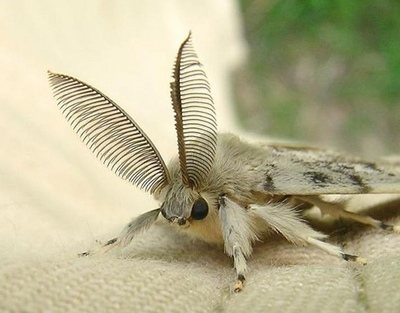
Nutritional Features
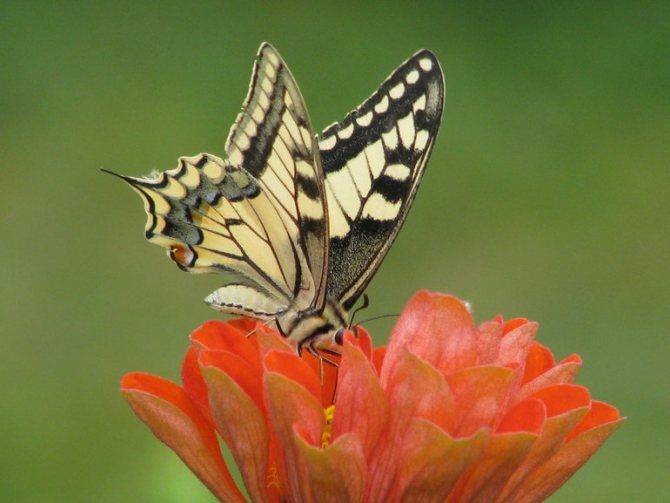
Basically, insects prefer to eat pollen, flower nectar, tree sap, overripe fruits, but there are also special species that are picky eaters. For example, the hawk moth, a honey lover, enters the hive and enjoys its favorite food. Some members of the nymphalid family replenish moisture loss by eating the urine and sweat of wild and domestic animals. Some tropical butterflies prefer crocodile tears as moisture.
Insects, which do not have a mouthpart at all and live extremely short lives, use supplies that were made when the caterpillar found it. Some types of butterflies are real vampires. They replenish lost strength by consuming animal blood.
Video
And finally, an interesting documentary about butterflies from the Discovery Channel.

Author: Pavel Chaika, editor-in-chief of Poznavaika magazine
When writing the article, I tried to make it as interesting, useful and high-quality as possible. I would be grateful for any feedback and constructive criticism in the form of comments on the article. You can also write your wish/question/suggestion to my email [email protected] or Facebook, with respect, the author.
Author page
Habitats
Where do butterflies live? Butterflies live almost everywhere, with the exception of the northern Arctic latitudes. Of course, they are not there in the cold either.
Antarctica. In general, butterflies love warmth, so they are especially abundant in warm tropical latitudes.
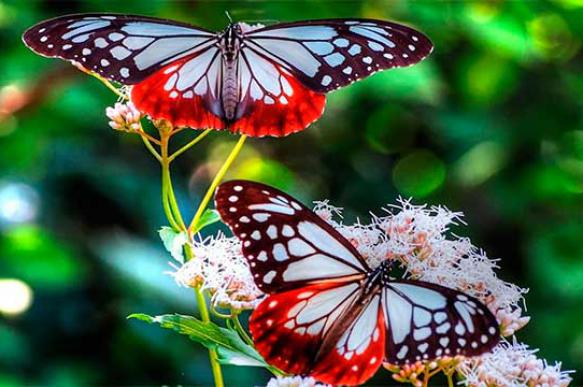
External structure
Adult individuals differ from other representatives of the order in the special scaly cover of their wings and the structure of their mouthparts, therefore, first of all, in the 7th grade biology project “Butterflies” it is necessary to disassemble the external structure of the insect:

- the head has a round or oval shape, connected by the occipital part to the chest;
- The chest is divided into 3 segments. The front part is significantly smaller than the middle or back part;
- paws or legs - 3 pairs are located in the back. There are spurs on the shins of the front legs. They are designed to keep the insect's antennae clean;
- abdomen - shaped like an elongated cylinder, consisting of 10 segments and having a ring-shaped structure;
- wings - consist of two pairs. They have the structure of a membrane, which is penetrated by longitudinal and transverse veins. They are covered with flat scales of various shapes. They are modified hairs. Some are equipped with a pigment substance - these are colored scales; some are simply colorless or optical. It is their combination in sunlight that gives the amazing effect of metallic shine. The dimensions of the front and rear wings can be the same or differ in size and shape. The bizarre coloration serves not only as decoration, but also as a protective camouflage, with the help of which the insect is perfectly camouflaged, blending into its surroundings.
The body of the butterfly is protected by a durable chitinous shell. Depending on the species, the size of the insect varies from 2 mm to 31 cm.
Classification and types
There are incredibly many different types of butterflies; zoologists have counted as many as 158 thousand different butterflies. For all this diversity, there are several complex and confusing classification systems. In our opinion, the most successful is the system that divides butterflies into 4 suborders.
Primary toothed moths
This includes small butterflies whose wingspan ranges from 4 to 15 mm. Butterflies of this suborder have a gnawing mouth and long antennae reaching 75% of the size of their front wings. The suborder consists of 160 species of butterflies. Among the representatives are:
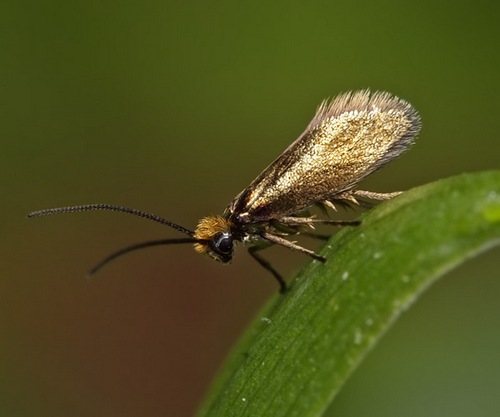
Proboscis butterflies
The wingspan of these butterflies is no more than 25 mm. Previously, they were classified as primary toothed moths, with which these butterflies have much in common. The most famous butterflies of this suborder:
- flour fire,
- spruce cone moth.
Proboscis butterflies
They are the most numerous suborder, which includes several tens of thousands of different families of butterflies. The appearance and size of proboscis butterflies can vary significantly. Among the families of butterflies we can distinguish:
Family Sailboats
It is represented by medium and large butterflies with a wingspan from 50 to 280 mm. The pattern on their wings may consist of black, red or blue spots. Among the most famous butterflies of this family are:
- swallowtail butterfly,
- sailing ship "Glory of Bhutan".
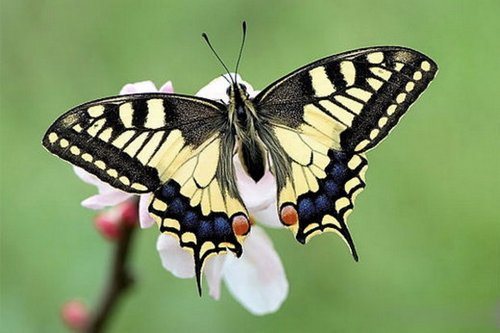
Family Nymphalidae
A distinctive feature of butterflies of this family is the absence of thickened veins on their wide wings, which have variegated patterns. The wingspan of these butterflies is 55-130 mm. Among the most prominent representatives can be identified:
- admiral butterfly,
- day peacock butterfly,
- butterfly hives,
- mourning butterfly.
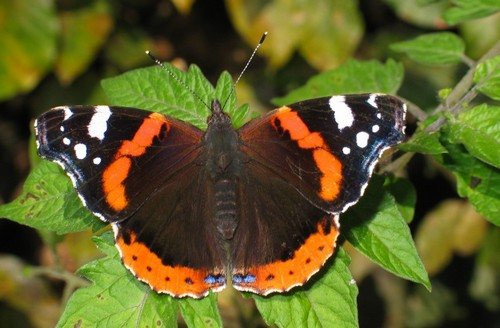
Hawkmoth family
This includes moths with narrow wings, the span of which is no more than 13 cm. Also, all butterflies of the hawkmoth family have a characteristic pattern, their abdomen is thickened and fusiform. The most famous among them are:
- "death's head" hawkmoth
- oleander hawk moth,
- poplar hawk moth.
